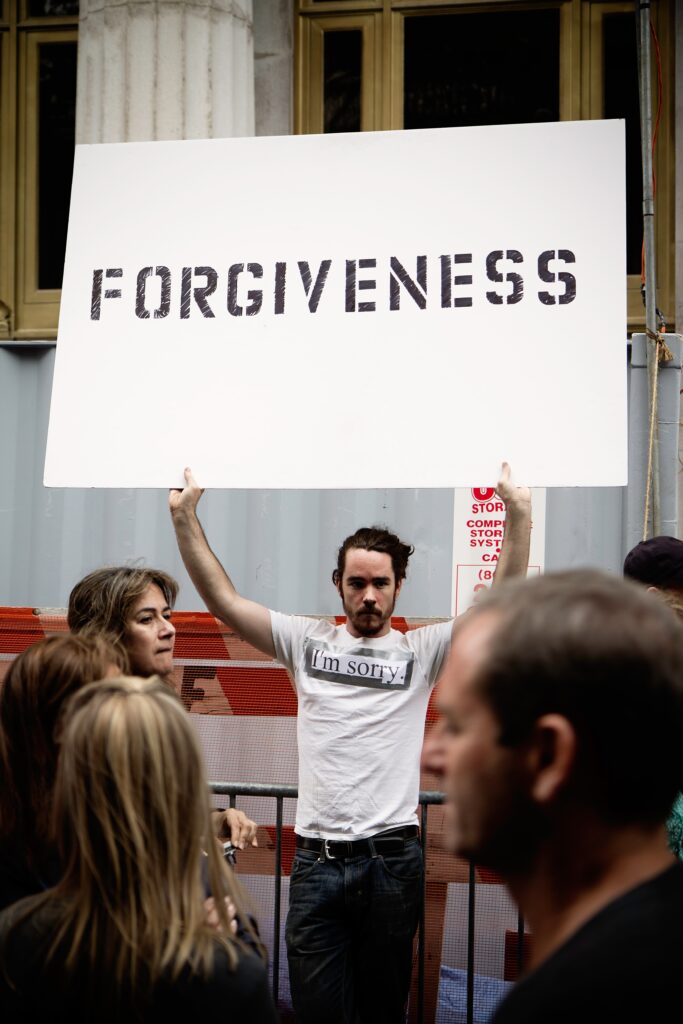The two most powerful words to come out of a CEO’s mouth can also be the most humbling: “I’m sorry.”
When done well, corporate apologies can fix a PR disaster and turn around ill will towards a company. However, when done poorly, apologies can add to the problem and seem disingenuous and insincere.
Here are 10 examples of the most powerful corporate apologies. These examples show that an open, heartfelt apology can make all the difference.
KFC Adds Humor to a Missing Chicken Situation
When KFC ran out of its most important ingredient — chicken — and had to temporarily shut down its 900 restaurants in the UK, angry customers took to social media. KFC took a risk by adding humor to its apology in a masterful and self-deprecating way. It took out a full-page ad in London newspapers that simply showed its signature chicken bucket with a re-worked logo: “FCK.” Paired with a brief explanation of the problem and a vow that it wouldn’t happen again, KFC saved its brand — and its chicken.
PwC Keeps it Short After Oscars Fiasco
It was the mistake seen around the world: the wrong movie was announced as the Best Picture winner at the 2017 Oscars. Responsible for the mistake was PwC, which was tasked with counting the votes. Instead of making excuses, PwC owned its mistake and offered a short and clear apology. The statement briefly explained what happened, apologized to the people involved and was gracious in thanking the people who handled the situation. Instead of drawing out an embarrassing situation, PwC took ownership, apologized and moved on.
O.B. Tampons Creates 10,000 Personalized Apology Videos
Perhaps one of the best ways to apologize is to sing it. In 2010, a line of O.B. tampons was abruptly taken off the shelves after supply issues, and customers were furious. O.B.’s parent company, Johnson & Johnson, sent a personalized apology song to all 65,000-plus women in the company’s database with their name in the song. In all, the company made videos for 10,000 different names. Customers could easily share the video on social media, which helped O.B. turn a potential PR disaster into a social media win.
Apple Uses Social Media to Apologize to Taylor Swift
Anyone who’s heard any of her songs knows it’s not a good idea to get on Taylor Swift’s bad side. The singer boycotted Apple Music after the service offered three free months to customers without paying artists. Swift posted her news on Tumblr, so Apple responded on Twitter with an apology and a statement that it would change the policy and pay artists. Apple’s apology stood out because it was directly to one person on a platform everyone could see.
Airbnb’s Diversity Apology Takes Action
Airbnb was accused of racial profiling and discrimination in December 2015, with a Harvard paper and social media frenzy to back up the claims. Instead of running away, Airbnb proactively addressed the issue with an email from the CEO to all members. The company took a stronger stance against discrimination with a new policy and followed it up with an audit and inclusion campaign.
JetBlue CEO Offers Raw Video Apology and Promises to Change
One of the worst aviation PR disasters came when JetBlue passengers were stranded on the tarmac for 11 hours with limited updates. After the fiasco, JetBlue’s CEO shared a raw video with his apology. He also made detailed promises about how the company would prevent similar issues from happening in the future and re-committed to the company’s reputation of strong customer service with the JetBlue Customer Bill of Rights.
Netflix Recognizes Not All Ideas are Good
Back when DVDs were still an important part of Netflix’s business, the company broke into two categories with separate pricing and billing — one for streaming and one for billing. The change meant a price increase that customers weren’t happy about. The CEO was open and honest about the mistake and admitted he had messed up. His open letter to customers did the trick, and people appreciated that he owned the mistake.
Sony Helps Remedy Data Breach
In 2011, Sony was the victim of one of the largest data breaches in history when the personal information of 77 million PlayStation users was leaked. The CEO apologized personally and acknowledged the frustration the breach had caused. Even better, customers were given a free month of PlayStation Plus and identity theft insurance to remedy the situation.
Toyota Makes Personal Apology Visible
Toyota’s biggest nightmare happened in 2010, when more than 8 million cars were recalled and nearly 90 people were killed because of accidents caused by the defects. The CEO offered personal condolences to the families and emotionally apologized to all customers. To make sure everyone got the message, Toyota created an ad campaign admitting it hadn’t lived up to its safety standards and took out ads in major newspapers about how it would fix the safety issues.
Domino’s Responds to Prank Video with Apology Video
Companies learned the danger of social media in 2009 when a video of Domino’s employees putting cheese up their nose and farting on the salami they used on a customer’s pizza went viral. In a respond to the prank video, Domino’s CEO responded with a heartfelt apology video of his own. His video put a face to the company and outlined the company’s cleanliness standards.
Every situation and apology is different, but these examples show that an honest and timely response can turn a situation around. When it comes to apologizing, taking ownership and fixing the problem goes a long way.
Blake Morgan is a keynote speaker, futurist and author of “More Is More.” Sign up for her weekly customer experience newsletter here.

